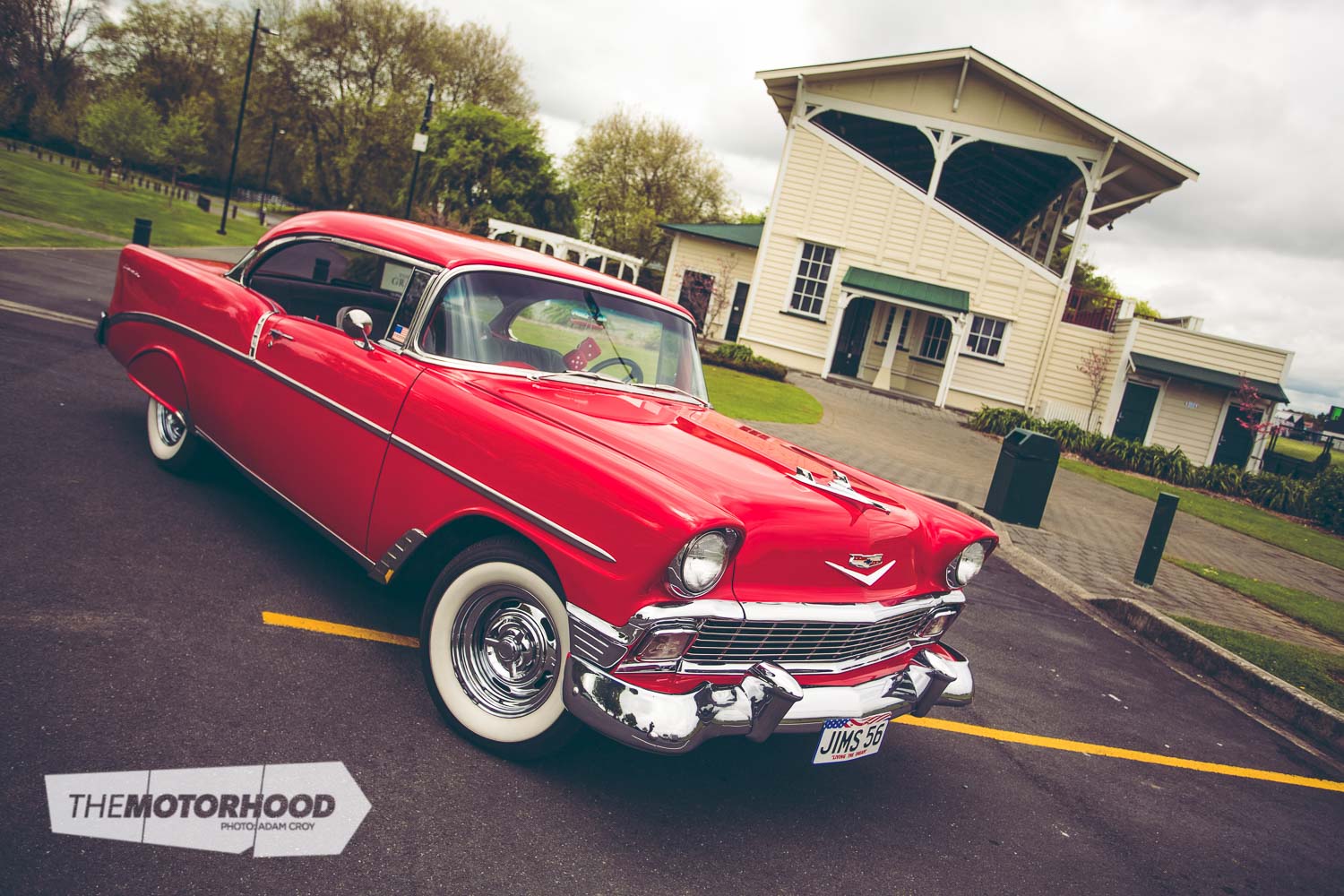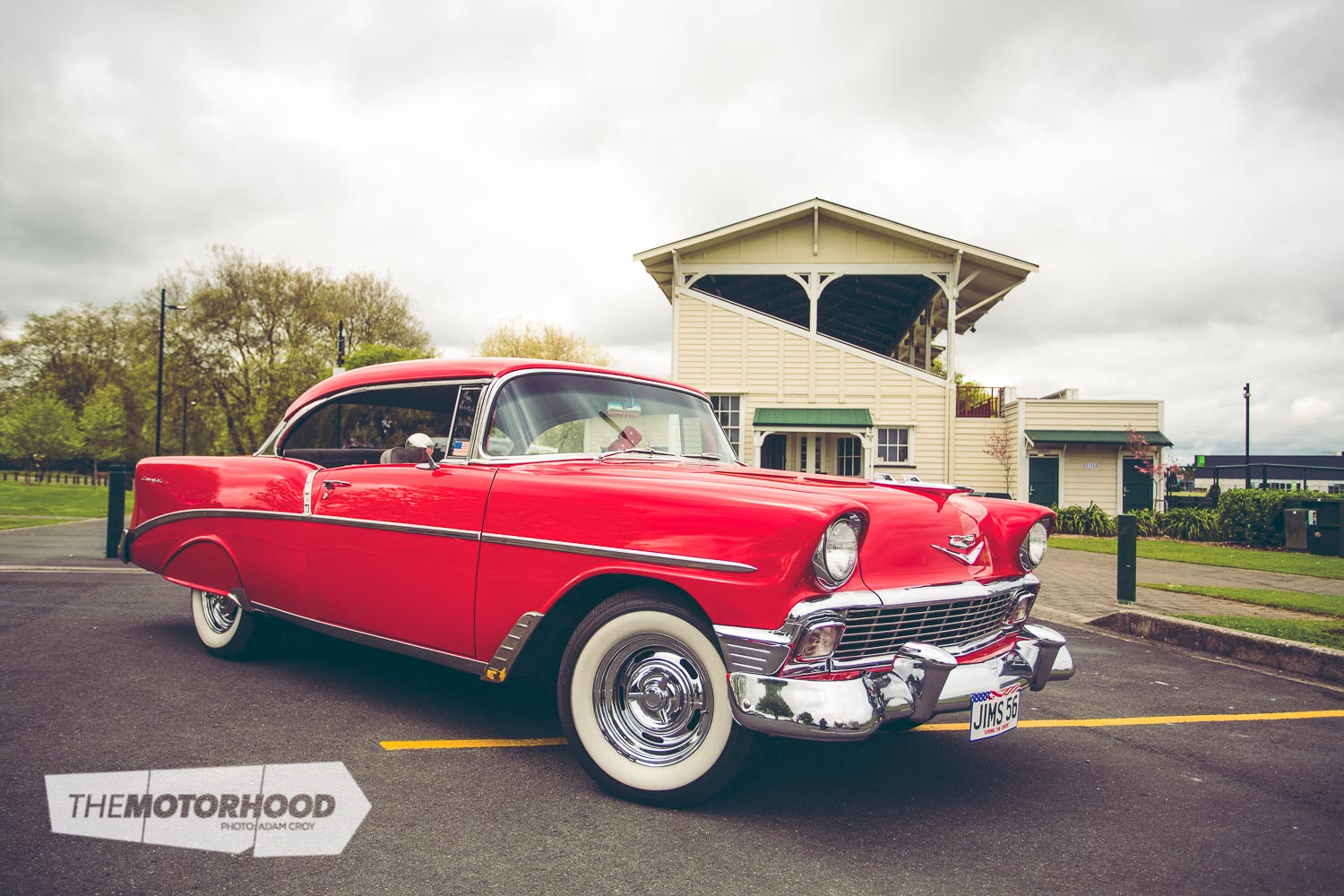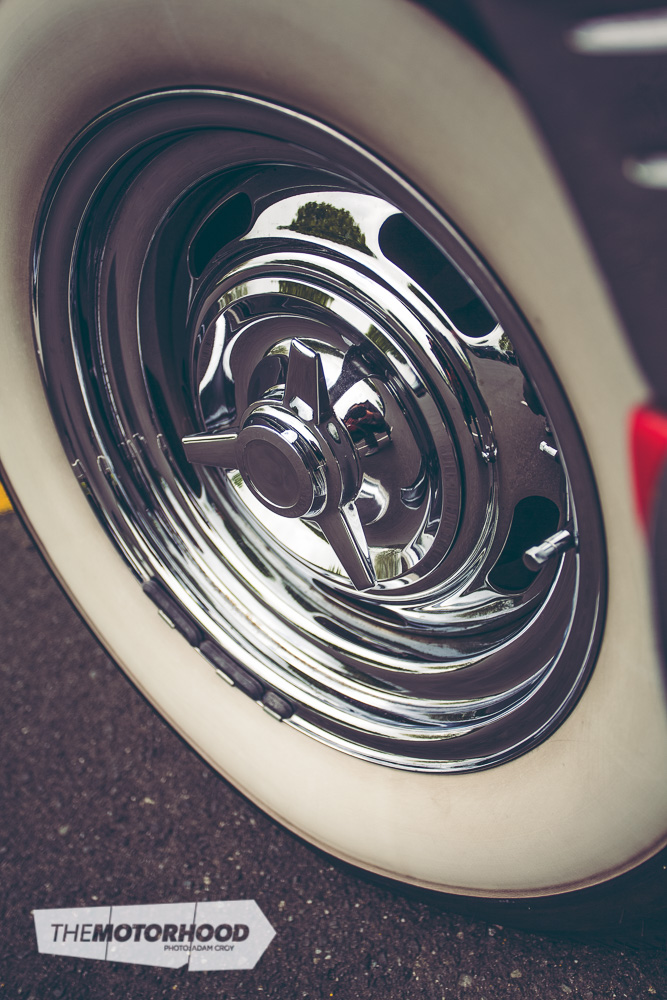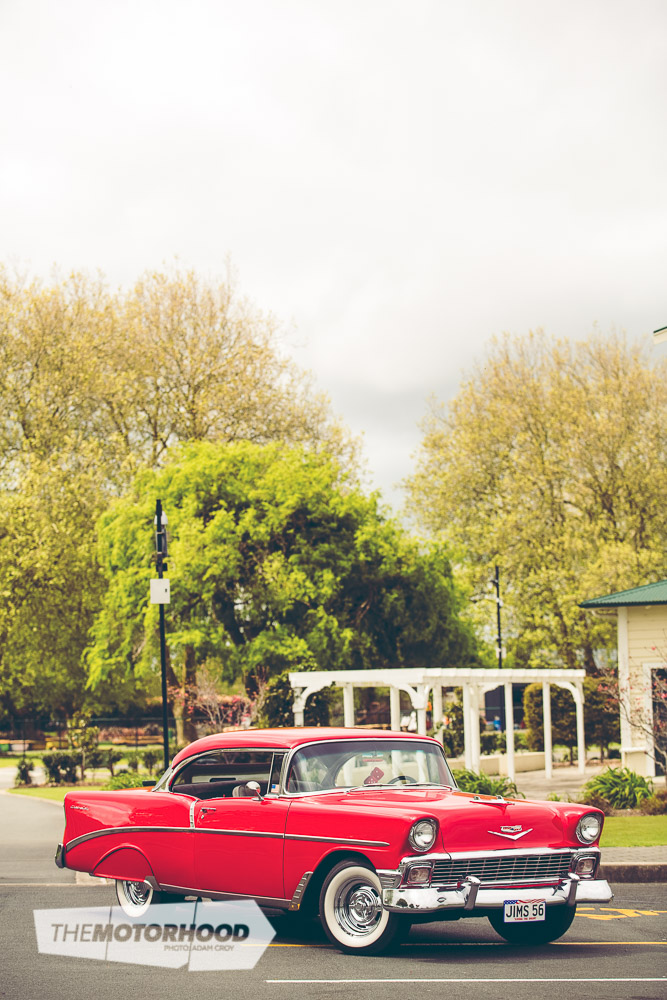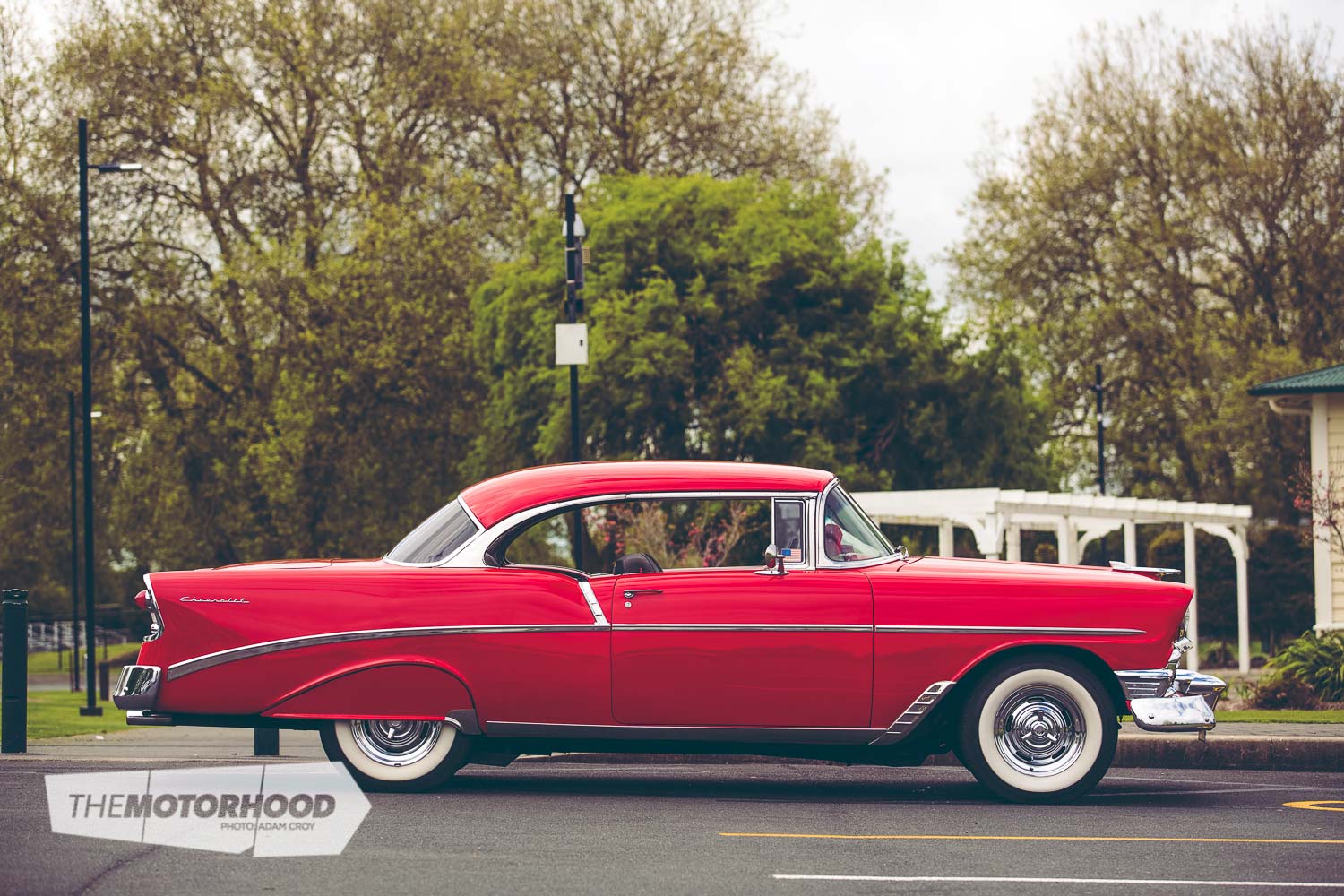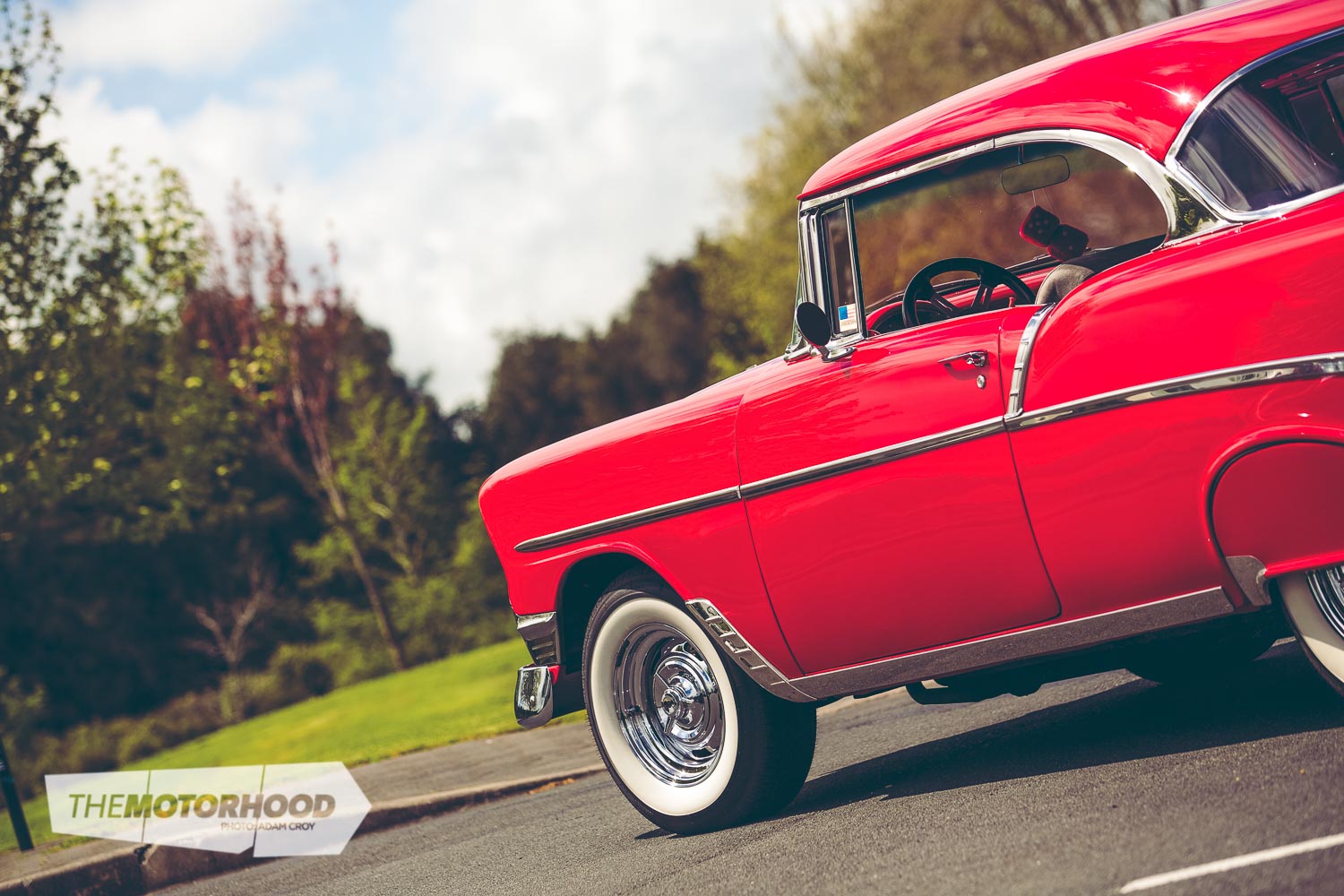data-animation-override>
“Retired drag racer Jim Crain Snr has settled into a relaxing lifestyle, and chooses to spend his time in a more sedate fashion these days — although the car he’s chosen for use in the slow ‘cruising’ lane is something quite special”
Jim Crain Snr emigrated to New Zealand from Miami Florida in 1976, primarily so that his son could attend school in this country. He had first encountered Kiwis while in Australia, where he owned a mobile home factory. He sold that business in 1975 and moved back to the US, but the good things he’d heard about New Zealand were enough enticement for him to pack his bags again, and within a year Jim was on his way to our shores.

At the same time he decided to continue with what he loved to do best — drag racing. For several years during the late ’70s and early ’80s, Jim was one of the main drawcards for spectators at Meremere drag strip, as he and his ‘Once a Knight’ Topolino Altered became one of the star attractions. Jim also raced his ’63 Corvette roadster as well as an alcohol-fuelled rail dragster and, in addition to competing on the track, he was responsible for bringing several well-known drag racers and their Funny Cars to our shores. These included the first American Funny Cars to visit and race in New Zealand — Gene Beaver’s ‘LA Hooker’ Mustang II and Jim White’s ‘Phoenix’ Camaro, as well as Bill Shrewsberry’s famous wheel-standing Knott’s Berry Farm wagon. Exhibition runs by Doug Brown’s jet-powered dragster also wowed the Meremere faithful, thanks to Jim.

A nasty surprise
A few decades down the track — probably more than Jim would care to remember, and while he was still actively attending to a successful racking and display business — he decided to purchase his dream car, a 1956 Chevrolet 210 Sport Coupe. With that decision made it was time to search his homeland for a suitable car, and it wasn’t long before Jim found exactly what he was looking for. After having this beautiful-looking Chevrolet thoroughly checked out by an independent inspector, he pulled the trigger and purchased the car in June 2013.
When it arrived in New Zealand Jim decided to put it on a hoist to inspect the underside before embarking on the VIN process. What he discovered wasn’t what he expected to find. After peeling back the layers of fibreglass, wet masses of putty literally fell into his hands, thus revealing the extent of rust in the floor, and someone’s attempts to hide it. The entire underbody was a total mess. Jim’s immediate thought was to ship the car back to the US and have one of his friends try and sell it. However it was still drivable, and when he took his wife, Rosie, for a Sunday ride, she told Jim how much she liked the car — that was it, he was stuck hard and fast and jokingly blames her, but says in reality, “She is my angel!”

The rebuild
With the decision made to keep the Chevrolet, Jim took it to Dane Robinson at Bryant Road Panel and Motors Ltd in Hamilton to carry out a full body-off restoration. Armed with his Danchuk USA classic 1955–1956–1957 Chevrolet parts specialist catalogue, Jim and Dane picked out everything they needed to complete the restoration, plus a few additional goodies, and quickly placed their order.
The next thing on the agenda was to remove the body from the chassis and separate that from the engine and automatic transmission. Once the differential, suspension and brake components were also stripped from the chassis, it was blasted and repainted black, and taken to Noel at Nostalgia Motors. Noel fitted new power-assisted disc brakes all round as well as power steering, and attended to the remaining mechanical items before reassembling them onto the chassis.
Whilst all this was going on, the underside of the body was totally stripped, including the rotten floor, and replaced with brand-new parts and panels — these including floor pans and inner quarter panels, all expertly welded into place. Ironically, the top side of the body was in great shape, including the stunning red paint scheme, so much care was taken not to cause unnecessary damage to the car’s exterior.
Fresh soundproofing was fitted once the entire floor was complete, while new seat brackets were fabricated and fitted into place to replace the shoddy stack of washers that had been pressed into service by a previous owner.
The body was then carefully lowered back onto the frame and fastened onto the rubber mounts, but not before installing a brand-new 5.7-litre, 306kW (350ci, 410bhp) Chevrolet racing engine, coupled to a new Turbo-Hydramatic 700R automatic transmission with overdrive feeding into a new GM posi-traction rear end — a complete drive train befitting a retired drag racer.

Go faster
Now on the home stretch, the Chevrolet was completely recarpeted and new, four-way power bucket seats were installed. Other new interior items included a brand-new clock and genuine 1956 GM radio complete with retro-fitted CD, MP3 and USB capability plus a great set of speakers, power windows, air conditioning, a complete new Danchuk wiper system and a Dakota cruise control system.
He was almost finished, but Jim couldn’t resist adding a few more go-faster engine items, like a new set of performance exhaust headers with a Flowmaster exhaust system, and an electric fan to keep things operational at optimal temperatures.
Jim says this has been a superb rebuild, and he reckons that a good cheque book can solve most problems — he’s sure glad he had one of those! At 79 years of age, and now semi-retired, he wishes he was 40 again. He remembers buying a brand-new 1956 Chevrolet in 1956, when he was 20 years old, for US$2400, at a time when petrol was 22 cents a US gallon. It used to cost four bucks to fill up in those days, but it’s almost $185 today.
“My! How times have changed,” says Jim, who’s enjoyed a wonderful life in New Zealand, and has met many new friends along the way. As he puts it — “It’s a great place to live and enjoy life in the slow lane!” Wise words from an ex drag racer.
1956 Chevrolet 210 Sport Coupé
- Engine: Chevrolet V8
- Capacity: 5.7 litres (350ci)
- Bore/stroke: 101 x 88.4mm
- Valves: OHV
- Comp ratio: 9.5:1
- Max power: 306kW at 4800rpm
- Fuel system: Four-barrel Holley carburettor
- Transmission: Turbo-Hydramatic 700R automatic transmission with overdrive
- Suspension F/R: Coil spring / semi-elliptic leaf spring
- Steering: Recirculating ball
- Brakes: Power-assisted discs
Dimensions
- Overall length: 5016mm
- Width: 1880mm
- Wheelbase: 2921mm
- Kerb weight: 1457kg (estimated)










